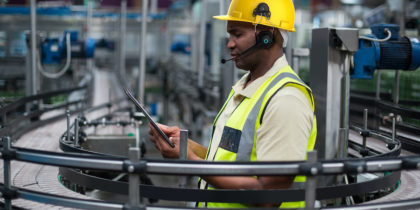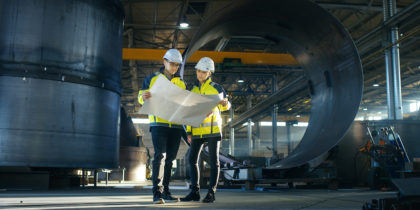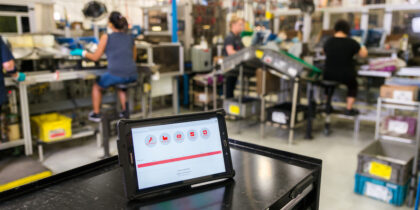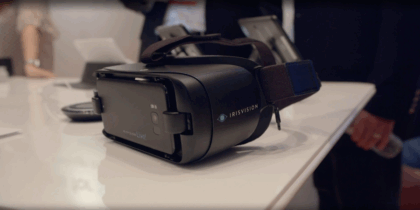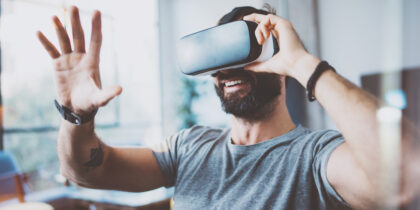When shooting with VR cameras like the Samsung 360 Round, planning is everything. Due to the sheer amount of file space, stitching and rendering time required to work with the footage, it’s important that you plan to be efficient on location. This will save you time, headaches and many hours of post.
Pre-production in the world of VR can be very different than traditional film. You need to think outside the frame. This opens up endless possibilities for dynamic interaction with your subjects and settings, but also means you have to give up some control. Commanding attention in VR can be stunning — but to do it right you need a solid storyboard and plan.
Know Your Location
Always scout your locations, if at all possible. Because of the nature of 360 video, you can’t simply hide undesirable parts of the scene outside of your frame. You have to know your locations front to back, from the ceiling to the ground. Take reference shots with a portable 360 camera such as the Samsung Gear 360. If you can’t be there yourself, see if someone on location can provide 360 panoramic photographs from a smartphone.
If you’re shooting a live event or concert, it’s best to be part of the rehearsal or sound check so you can test your placement and camera position. For larger scale events, you’ll want to be involved in the build-out to determine where camera equipment will be mounted.
Storyboarding in 360
Storyboarding for VR is less about the frame than it is about space and perspective. You’re not just concerned with what’s in front of the camera, but what happens all around it. Where you put the camera is where you put your viewer’s eyes, and this perspective sets the tone for the VR experience.
With 360 content, you need to visualize the entire scene, not just the frame. If you draw the scene top-down as a circle with the camera in the middle, you can plan where objects will appear in relation to the viewer’s perspective. You can also combine top-down views with sketches of the opening view, similar to frames but only representing the default opening view.
When storyboarding, keep in mind that your action happens in one of three zones:
- Primary: the 90-110 degree opening field of view
- Secondary: the zone just outside the field of view on either side
- Tertiary: everything in the rear 180 degrees
Pay close attention to parallax when blocking talent. When shooting stereoscopic, it’s important to place your subjects between stereo pairs. If shooting monoscopic, you may want to ensure your subjects remain in front of a single lens to avoid crossing stitch lines.
The primary view should contain all of the vital parts of a scene you need your viewer to see. The secondary view can be a great transition zone to capture the viewer’s attention and get them to explore. The tertiary zone requires the viewer to have free motion to turn all the way around, which can give them a rewarding perspective that most viewers won’t see.
Plan Your Shots
Here are the key factors when determining the composition of a VR shot:
- Location: Where will you physically place the camera in the scene? This is essentially where your viewer will live in the scene. Unlike traditional filming techniques, the VR camera should typically be in the middle of the setting where the rest of the talent or subjects will be. Your viewer should feel like a part of the scene — not just a fly on the wall. This is what makes VR video so immersive: the viewer feels like they’re experiencing and participating in something, not just watching it.
- Perspective: What height will the camera be in relation to the scene? Think about how realistic you need your vantage point to be. Placing the camera at human height will give your viewer a sense of standing in a real place, while mounting it on a drone can make them feel like they’re flying. These sensations will be the deciding factor in your shot list. How do you want the viewer to feel? Who do you want them to be?
- Distance: How close will you be to your subject? Plot the distance between subject and camera. Keep in mind that Samsung recommends the 360 Round be placed at least five feet from people or objects for a good stitch and effective stereo 3D. Just like in the real world, people in VR have a comfort zone too. If you put them too close or too far they may feel uncomfortable.
Getting and Keeping Attention
One of the biggest challenges with filming in VR is keeping the attention of your viewer from shot to shot — making sure they’re looking where you want them to look. In many cases, you just have to make assumptions, but you can at least direct their attention with visual or auditory cues.
Viewers have a tendency to watch and follow people who are talking with them. They also tend to look at objects like boats or cars as they move by. You can use these objects or people in a scene to draw attention or direct it elsewhere. You can also use spatial audio to give the viewer more of a sense of presence, and direct attention with head-tracked audio. Finally, keep in mind that the orientation of your next scene should place your new action where your old action left off.
Of course, some people just won’t pay attention no matter what you do. You can’t win them all — shooting VR means giving up that control. In fact, the viewer’s right to choose is what makes the medium unique and immersive. Your goal in pre-production is to map out that virtual experience. When you think beyond the frame to the full experience, you’re ready to shoot!
Download our Ultimate Guide to 360 Video Production for more insights, from pre-production to post.

